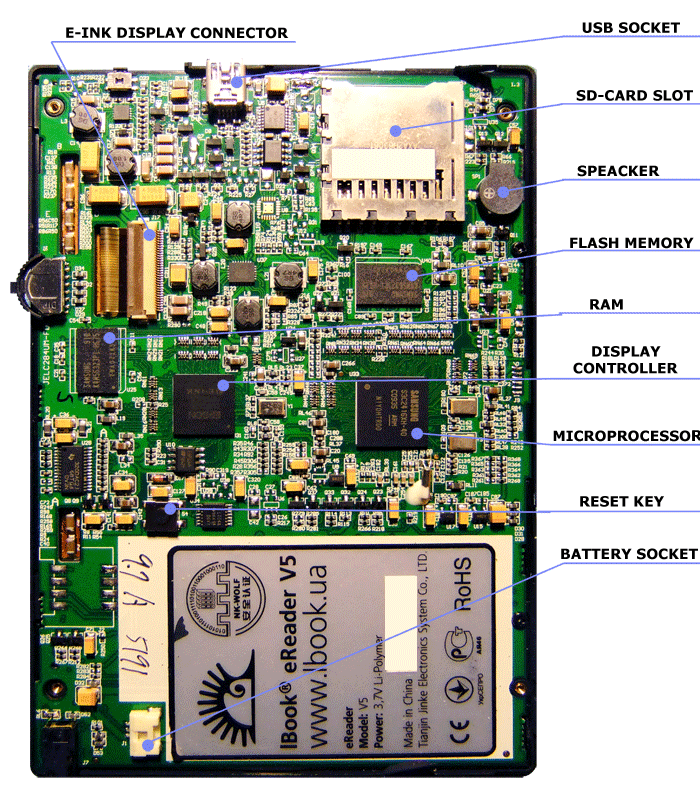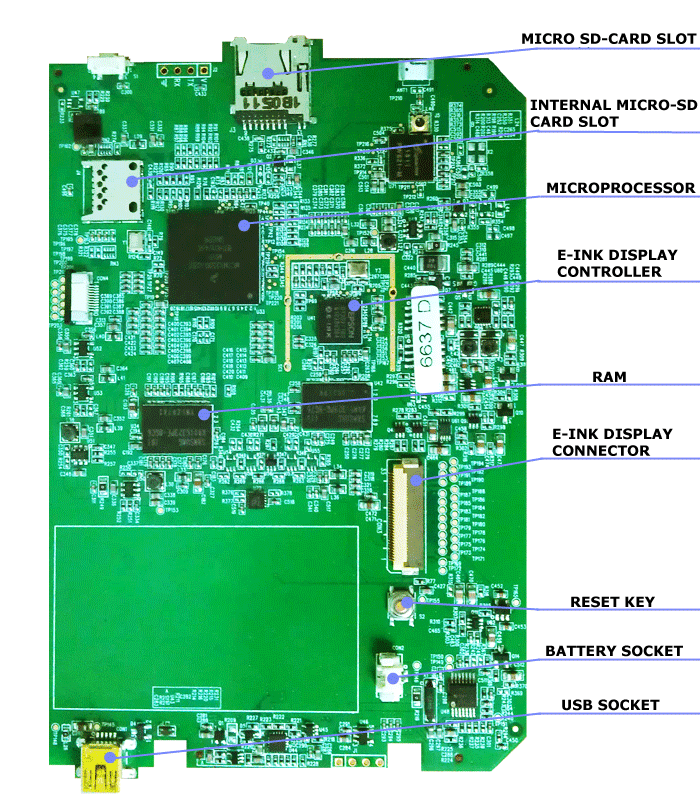What is inside?
Here we will shortly tell about from what components modern electronic books and as they are arranged gather....
Parts of LBOOK V5

Heart of any modern electronic device is the microprocessor. LBOOK V5 it is executed on microprocessor SAMSUNG 2416 (ARM 9) with clock frequency of 400 MHz. It quite suffices for work of the electronic book. The microprocessor reads out the program (firmware) from non-volatile flesh-memory.
The flesh-memory chip is similar to the microcircuits established in USB flesh-stores. The part of this memory is taken away under an firmware. Here located the program of reading of texts, various drivers, an explorer of files, a book shelf, applications and etc. which are not visible to the user at connection of the e-book reader to the computer. The second part of the memory serves for storage of files of books and is displayed by the computer a separate disk.
Random access memory, unlike flesh-memory, does not keep the data at power off shutting. Here the program of the reader stores values of variables, current pages of the text, their numbering, and etc. Size of operative memory of 64 Mb.
The slot for a SD-card. At card installation in this slot, its contents it is displayed by one more disk at connection of the e-book reader to the computer.
Display EPSON controller will transform the electrical signals coming from the microprocessor, to a format, e-ink to the display.
Parts of Pocketbook 360

Appointment of all basic components of the e-book reader similarly LBOOK.
The Microprocessor is applied type FreeScale iMX.507 with clock frequency of 400 MHz. As flesh-memory used micro-SD card. To take out this map from the slot probably only having opened the device case. It is impossible to try to read the data from this map the computer with operating system Windows. The SD-card of internal memory is formatted under OS Linux and has file structure EXT3.
Next

